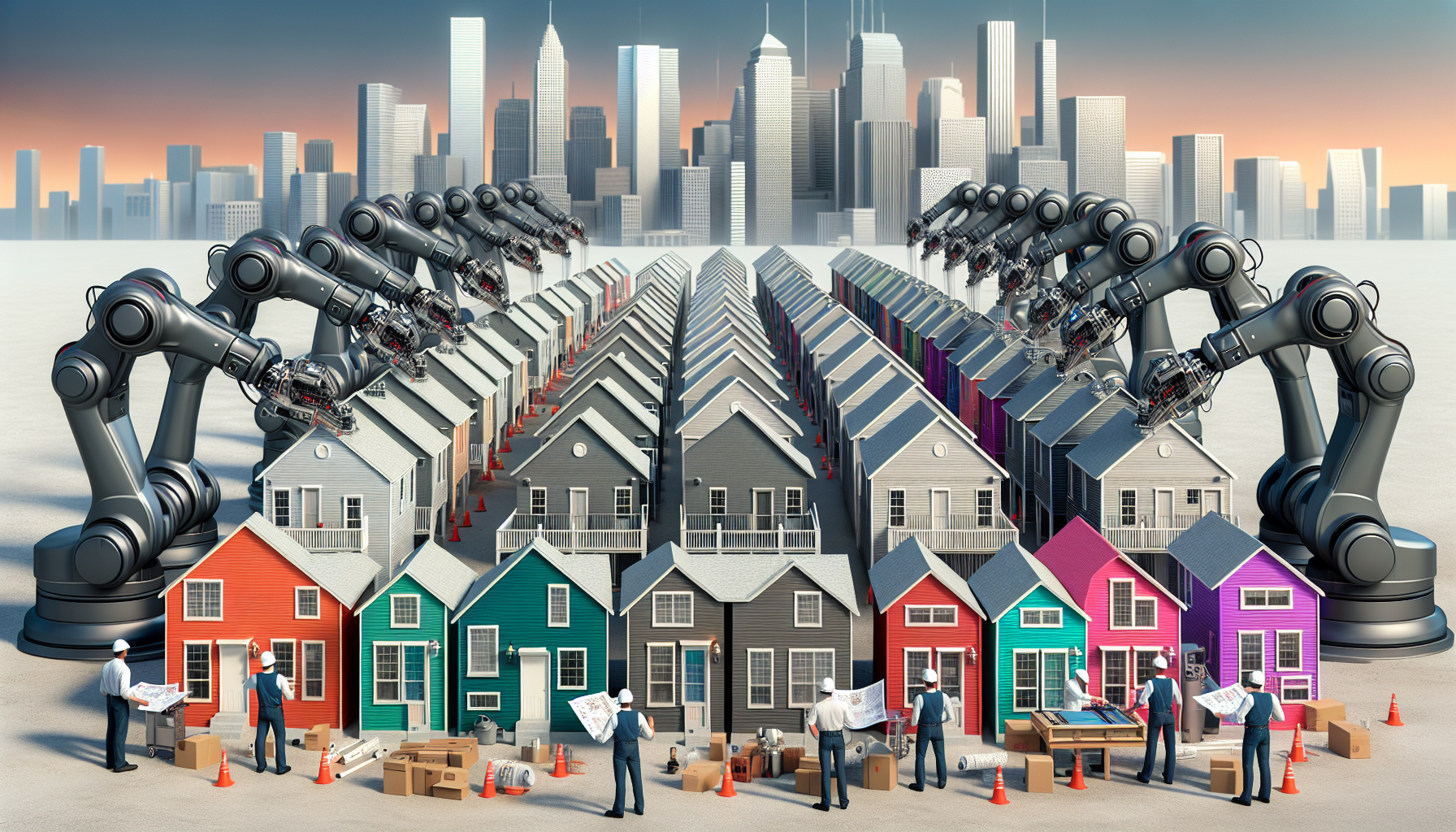 Transforming Residential Building: The Emergence of 3D Printed Neighborhoods
Transforming Residential Building: The Emergence of 3D Printed Neighborhoods
The advancement of residential building has arrived, taking form in Georgetown, Texas. An innovative endeavor, almost two years in development, is approaching its final stages. This cutting-edge community, referred to as Wolf Ranch, is being constructed utilizing a gigantic 3D printer, the Vulcan, which is 45 feet wide and tips the scales at over 4.75 tons. This ambitious initiative is a partnership between 3D printing construction innovator ICON and housing construction company Lennar. Let’s investigate the specifics of this trailblazing endeavor and consider the possible impacts on the future of housing.
The Innovation Behind 3D Printed Dwellings
The Vulcan 3D Printer
Central to this groundbreaking project is the Vulcan, a substantial 3D printer that can create homes with unmatched speed and efficiency. The Vulcan employs a unique blend of concrete powder, water, sand, and other components to produce tube-shaped layers of concrete. These layers are carefully stacked to build the walls of the homes, which are single-story structures featuring three to four bedrooms. The total printing duration for each residence is roughly three weeks.
Sustainability and Durability
One of the key attributes of these 3D printed residences is their durability and eco-friendliness. The walls, which resemble enormous lengths of corduroy, are engineered to endure severe weather. Moreover, the homes are designed to be water-resistant and energy-efficient, making them appealing to environmentally aware consumers. The modern ranch-style architecture, developed by the design firm BIG-Bjarke Ingels Group, provides a sleek aesthetic to these avant-garde constructions.
Efficient Building Process
Streamlined Construction
The construction operation for Wolf Ranch has been notably optimized since it began in November 2022. What started as a project needing five different construction teams has now condensed to merely one crew and one robotic printer. This reduction in workforce showcases the capability of 3D printing technology to transform the construction sector by lowering labor expenses and enhancing efficiency.
Obstacles and Resolutions
Addressing WiFi Disruption
While the advantages of 3D printed homes are many, some challenges must be tackled. A significant concern is the thickness of the walls, which can disrupt WiFi connectivity. Residents have resorted to using mesh internet routers with signal transmitters positioned throughout the house, rather than depending on a single router. This approach guarantees that connectivity is preserved despite the solid construction of the walls.
A Peek into Tomorrow
NASA’s Curiosity in 3D Printing Innovations
The prospective uses of 3D printing technology reach well beyond our planet. NASA has shown interest in applying ICON’s technology to construct habitats on the moon for its Artemis Moon exploration initiative, with the first crew set to launch in September 2025. This thrilling development emphasizes the adaptability and wide-ranging potential of 3D printing in the realm of construction.
Conclusion
The Wolf Ranch venture in Georgetown, Texas, marks a pivotal achievement in the progression of residential building. By harnessing the capabilities of 3D printing technology, ICON and Lennar are paving the way for more efficient, sustainable, and durable homes. As the project nears its conclusion, it provides a glimpse into a future where 3D printed communities could become commonplace, not only on Earth but also potentially on other celestial bodies.
Q&A Section
Q1: What is the Vulcan 3D printer, and how does it function?
A1: The Vulcan is an extensive 3D printer that utilizes a blend of concrete powder, water, sand, and other substances to produce tube-shaped layers of concrete. These layers form the walls of homes, which are subsequently finished with traditional foundations and metallic roofs.
Q2: What is the duration of the 3D home printing process?
A2: The printing process for each residence lasts about three weeks.
Q3: What advantages do 3D printed homes offer?
A3: 3D printed homes are durable, eco-friendly, water-resistant, and energy-efficient. They are built to withstand severe weather and feature modern, contemporary designs.
Q4: What issues do residents encounter in 3D printed homes?
A4: One problem is the wall thickness, which may interfere with WiFi signals. Residents have had to utilize mesh internet routers to ensure connectivity throughout the residence.
Q5: How has the construction process progressed over time?
A5: The construction operation has evolved from needing five different teams to a single crew and one robotic printer, underscoring the efficiency brought by 3D printing technology.
Q6: What future prospects does 3D printing technology hold?
A6: Beyond Earth, NASA is exploring the possibility of employing 3D printing technology for constructing habitats on the moon as part of its Artemis Moon exploration program, set to launch its first crew in September 2025.
For more details on the recent innovations in residential construction and technology, visit Lonelybrand.